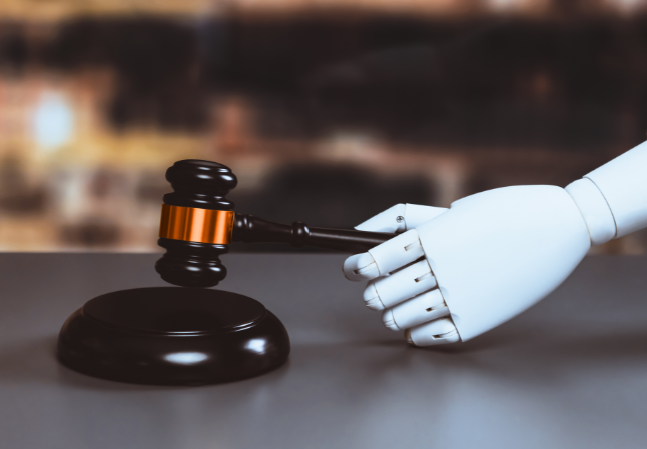Welcome! Save 30% on all CLE, CPE, and Professional Skills webinars, plus 15% off any annual pass with code CYBER2025
About the Course
Introduction
This CLE course will address substantive consolidation which allows the bankruptcy court to treat two or more debtors as one entity, pool the assets and claims of all entities, and eliminate inter-company claims for purposes of administration and distribution of assets.
Description
What creditor would not feel abused if the debtor's non-bankruptcy affiliate has substantial assets but will not join the case? Often the creditor may have dealt with the debtor and the non-debtor as a single enterprise, or the debtor may have even indicated that assets of the non-debtor were available to satisfy claims. Can the asset-rich non-debtor be pulled into bankruptcy against its will?
Substantive consolidation allows the bankruptcy court to disregard the separateness of the debtor and one or more entities--often subsidiaries or sister companies--pool the assets and claims of all entities, and eliminate inter-company obligations for purposes of voting and distribution. Consensual substantive consolidation is a reasonably common feature of corporate Ch. 11 cases.
Listen as our authoritative panel of attorneys discusses how trustees and creditors can reach beyond the debtor's estate to assets of related entities and insiders with substantive consolidation, piercing the veil, and alter ego liability. The panel will also discuss best practices for opposing these equitable remedies.
Presented By

Mr. Aurzada works with his clients to solve complex business problems. He regularly assists clients on matters involving significant corporate transactions, the preservation of intellectual property, civil litigation, and the restructuring of indebtedness. He advises public and private corporations, boards of directors, and management teams, and his industry experience includes representing companies involved in the technology industry, healthcare, real estate, retail, manufacturing, health spas, restaurants, and oil and gas.

Mr. Fender focuses his practice on bankruptcy and commercial litigation matters, in both state and federal courts. He routinely handles chapter 7 trustee adversary proceedings and contested matters. He has over 20 years of experience litigating and trying cases in the areas of employment disputes, shareholder negotiations and disputes, contract claims, unfair competition litigation, intellectual property, business tort, and contract matters.
-
This 90-minute webinar is eligible in most states for 1.5 CLE credits.
-
Live Online
On Demand
Date + Time
- event
Wednesday, June 3, 2020
- schedule
1:00 p.m. ET./10:00 a.m. PT
- Substantive consolidation
- Alter ego
- Piercing the veil
- Best practices for creditors
- Best practices for debtors
The panel will review these and other key issues:
- In which jurisdictions is non-consensual substantive consolidation still viable?
- How does substantive consolidation in bankruptcy court differ from theories of alter ego and piercing the corporate veil?
- Does the bankruptcy trustee have exclusive standing to pursue alter ego claims, or is this remedy available to creditors as well?
- What factors do courts consider in granting these remedies?
- What are best practices for debtors to reduce the risk that their business and financial affairs are not closely intertwined with affiliated non-debtor entities?
Unlimited access to premium CLE courses:
- Annual access
- Available live and on-demand
- Best for attorneys and legal professionals
Unlimited access to premium CPE courses.:
- Annual access
- Available live and on-demand
- Best for CPAs and tax professionals
Unlimited access to premium CLE, CPE, Professional Skills and Practice-Ready courses.:
- Annual access
- Available live and on-demand
- Best for legal, accounting, and tax professionals
Unlimited access to Professional Skills and Practice-Ready courses:
- Annual access
- Available on-demand
- Best for new attorneys
Related Courses

Veteran Bankruptcies: Unique Debtor and Creditor Issues Under the HAVEN Act and SCRA
Tuesday, January 6, 2026
1:00 p.m. ET./10:00 a.m. PT

Special Committees and Chapter 11 Investigations: What Courts Expect, Best Practices, Avoiding Pitfalls
Thursday, December 11, 2025
1:00 PM E.T.

Chapter 11 and Independent Directors: Maximizing Recovery; Challenging Conflicts; Defending Director Integrity
Thursday, January 22, 2026
1:00 p.m. ET./10:00 a.m. PT

Representing Landlords In Commercial Tenant Bankruptcies: Practical Guidance on Key Issues
Thursday, December 4, 2025
1:00 p.m. ET./10:00 a.m. PT
Recommended Resources

Transforming CLE from a Requirement to a Career Advantage
- Learning & Development
- Career Advancement
- Talent Development

Beyond Law School: Tackling the Realities of Modern Legal Practice
- Learning & Development
- Business & Professional Skills
- Career Advancement

